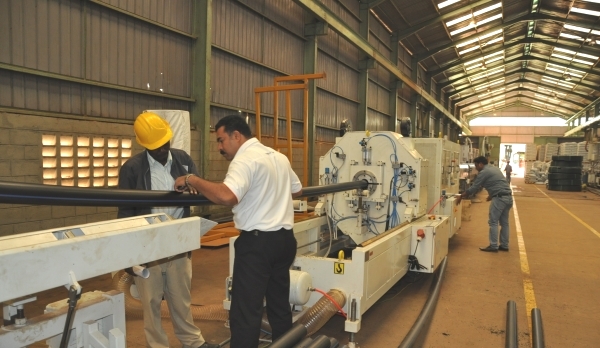Latest Stanbic PMI reflects rising optimism in private sector
 Around three quarters of the 400 respondents were optimistic regarding the next 12-month outlook.
Around three quarters of the 400 respondents were optimistic regarding the next 12-month outlook.
July 3—Optimism remains high in Uganda’s private sector with the latest Stanbic Purchase Managers Index (PMI) recording another rise from 57.3 in May to 57.8 in June despite the on and off border closure with Rwanda.
A reading of 50.0 marks the threshold of positive outlook and Uganda has not fallen below this since the PMI was launched. The survey, sponsored by Stanbic Bank and produced by IHS Markit, has been conducted since June 2016 and covers the agriculture, industry, construction, wholesale and retail and service sectors.
“The PMI once again rose to a survey record high of 57.8 in June as economic activity in the private sector remained robust. Indeed, the expansionary fiscal policy outlined in the FY2019/20 budget should continue to support activity especially if the absorption of the development budget improves,” Jibran Qureishi, the Stanbic Bank Regional Economist for East Africa said on Tuesday.
The monthly survey, involving 400 respondents, reflects a sustained growth in output to meet new orders. In response, firms took on extra staff and purchased additional inputs. The PMI is a composite index, calculated as a weighted average of five individual sub-components comprising of New Orders (30%), Output (25%), Employment (20%), Suppliers’ Delivery Times (15%) and Stocks of Purchases (10%).
Qureishi said. “Moreover, the good rains over the past couple of months will also probably bode well for the agriculture sub-sector in the second half of 2019. Interestingly, private sector firms in Uganda seemed to have shrugged off the trade standoff with neighbouring Rwanda as they have perhaps realigned their business models and looked for alternative markets.”
There were further increases in both input costs and output prices during June. However, Stanbic Fixed Income Manager, Benoni Okwenje said the latest reading was comfortably above the survey average of 53.6 at the end of the second quarter.
“Efforts to complete projects on time resulted in a further reduction in backlogs of work. To help in this regard, companies took on extra staff. Industry was the only monitored sector not to see a rise in employment, a picture that was repeated with regards to staff costs,” he said.
According to the survey findings, general improvements in demand and successful advertising campaigns were reportedly behind rises in both output and new orders. Some companies offered additional training to marketing staff. In both cases, growth was signaled across all five monitored sectors.
Alongside higher staff costs, rises in prices for purchases, electricity and water were reported in June. As a result, overall input prices increased, as has been the case in each month since the survey began in June 2016.
The report also shows that output prices also rose as companies passed on higher cost burdens to their customers. Stronger client demand and positive expectations around future activity levels led firms to increase their purchasing activity at the end of the second quarter. Stocks of purchases were also up.
Predictions of further improvements in demand and business expansion plans supported confidence that output will rise over the coming year. Around three quarters of respondents were optimistic regarding the next 12-month outlook.

 African Heads of state head to South Korea next week for Summit talks
African Heads of state head to South Korea next week for Summit talks
 Trading leads as main source of income for Ugandans
Trading leads as main source of income for Ugandans
 New leadership for bankers’ umbrella as total assets top $12 billion
New leadership for bankers’ umbrella as total assets top $12 billion
 Brussels Airlines to announce Nairobi service
Brussels Airlines to announce Nairobi service
 SITA promises enhanced travel experience after Materna acquisition
SITA promises enhanced travel experience after Materna acquisition
 Saudia’s 105 aircraft order stretches A320neo lead over rival Max
Saudia’s 105 aircraft order stretches A320neo lead over rival Max
